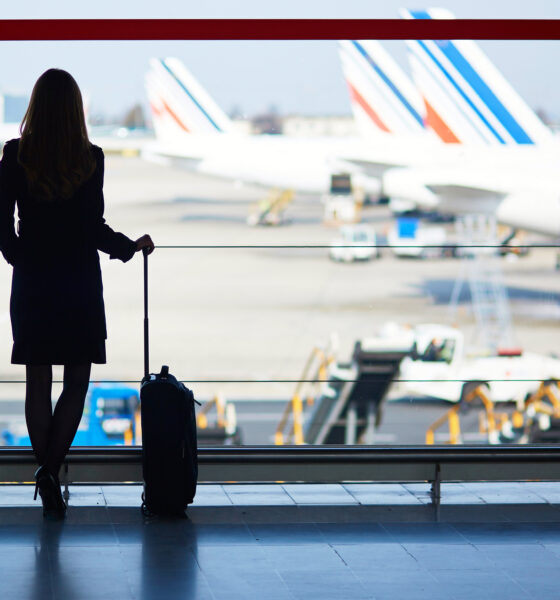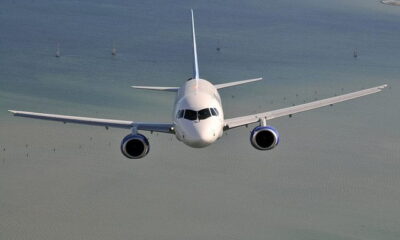

Editors Choice
Carbon Offsets For Flights: What Are They And Are They Worth It?
Global air traffic is on the rise, and 2020 is expected to set a new record—an estimated 4.72 billion passengers will fly this year. Aviation accounts for 2% of total greenhouse gas emissions; even short-haul flights are responsible for huge amounts of CO2. In fact, there are return flights that generate more CO2 than some countries produce in a year!
If you’ve flown recently, you may have noticed an extra option at the bottom of the page before you checkout. For those of us who recycle, drive electric cars, or eat less meat because of the environment, we’re probably quick to tick the box that adds a carbon offset fee to our flight purchase. But what exactly is it that we’re paying for? Can an offset that’s only a couple of bucks actually help us save the planet? Let’s take a look.
Carbon-friendly for less than $10
Carbon offsets for the flights who offer them are notoriously inexpensive. However, it’s important to remember that cheap doesn’t always mean ineffective. For instance, switching to a low-energy light bulb will only put you back a few dollars—the world is full of affordable ways to reduce emissions. Does this mean that we’re “fixing” climate change with each flight? Not so much.
A carbon offset is a monetary contribution to a project that helps reduce CO2 emissions or support new sustainable energy projects. A carbon offset could contribute to saving rainforests or building wind farms or hydroelectric dams. Individuals and companies can take advantage of carbon offsetting, and corporations like Microsoft, Disney, and General Motors have been buying offsets for several years now.
One common project supported through offsets is the planting of trees. Travellers may be picturing their $10 going directly into the soil and supporting an abundant jungle. But it’s helpful to break this down a bit. The trees need to be purchased and transferred to the site, and the site needs to be cleared for planting—these actions all produce carbon emissions. Additionally, there’s about 10 to 20 years of growth required before that sapling becomes a full grown tree capable of sequestering significant amounts of atmospheric carbon.
Many environmentalists and academics wonder about the controversial nature of offsets themselves. Are they just giving a free pass to industries and corporations to continue the acts that are, in fact, requiring the offsets in the first place? With each offset purchased for a flight seat, airlines are inclined to not just offer more offsets, but more flights as well. Offsetting is counterproductive from this perspective, but, as Delta experienced during their Earth Month day of carbon offsets, it’s a great marketing strategy.
For many travelers, carbon offsetting is better than doing nothing—but airlines clearly still have a long way to go. Major carriers are looking into biofuels and electric engines. Fortunately, until these new technologies are ready to be fully rolled out, there are still a few ways you can make air travel even more sustainable now:
How to Fly Sustainably
- Consider if the flight is necessary. Do you really have to fly at all? With technologies like FaceTime, Skype, and virtual meeting software, we’re more connected than ever. Gone are the days where we were limited by a slow mail delivery system. We’re able to do almost everything online, which reduces the need to travel. The Netherlands’ national airline, KLM, actually suggests virtual meetings in their “Fly Responsibly” campaign (where they ironically suggest that people don’t fly).
- Think about other modes of transportation. From ferry to coach, train to bus, there are several ways to travel in style. This means that getting from A to B in alternative ways is greener and, for the most part, cheaper.
- Go for economy seats. A person in business class contributes nearly four times as many carbon emissions as someone in coach. This is due to the heavier, bigger seats, the numerous on-board amenities, and the extra staff required in first class.
- Choose a direct flight. Did you know that most of the fuel burned during a flight occurs during take off? Less layovers is better for you and the planet.
- Look at Alternative Airlines.This website takes a look at different factors to help travelers find the most eco-friendly airlines. They look at airlines who innovatively reduce drag and fuel consumption, offer more vegan and vegetarian in flight meal options, and choose environmentally friendly magazines, seats, and beverage carts.
By 2021 and as a result of a UN agreement, airlines will be required to offset extra emissions on international flights. Will this be enough, or should we be doing more to make our air travel greener?


 Environment10 months ago
Environment10 months agoAre Polymer Banknotes: an Eco-Friendly Trend or a Groundswell?

 Environment11 months ago
Environment11 months agoEco-Friendly Home Improvements: Top 7 Upgrades for 2025

 Features9 months ago
Features9 months agoEco-Friendly Cryptocurrencies: Sustainable Investment Choices

 Features10 months ago
Features10 months agoEco-Friendly Crypto Traders Must Find the Right Exchange






























